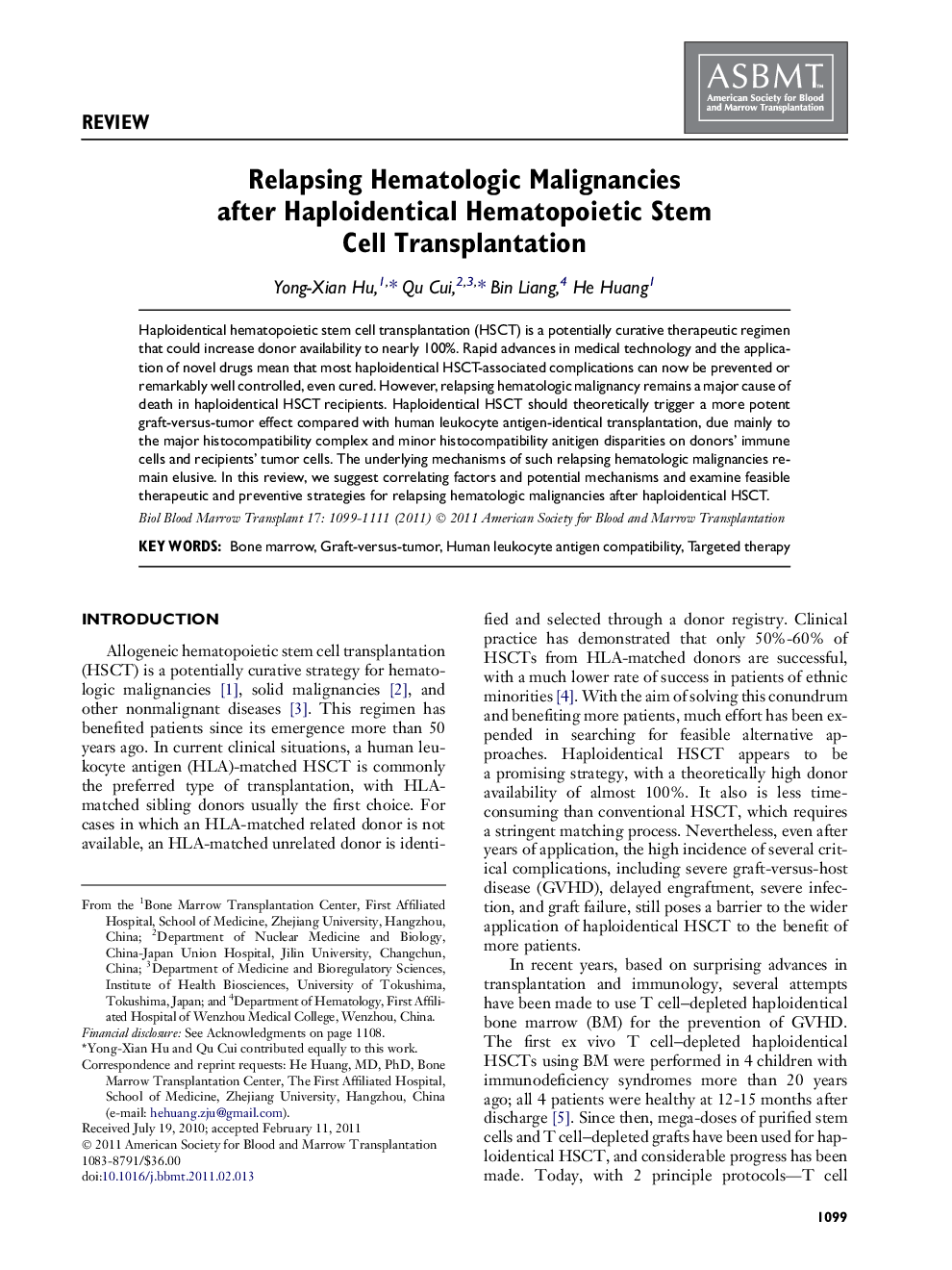| Article ID | Journal | Published Year | Pages | File Type |
|---|---|---|---|---|
| 2103900 | Biology of Blood and Marrow Transplantation | 2011 | 13 Pages |
Haploidentical hematopoietic stem cell transplantation (HSCT) is a potentially curative therapeutic regimen that could increase donor availability to nearly 100%. Rapid advances in medical technology and the application of novel drugs mean that most haploidentical HSCT-associated complications can now be prevented or remarkably well controlled, even cured. However, relapsing hematologic malignancy remains a major cause of death in haploidentical HSCT recipients. Haploidentical HSCT should theoretically trigger a more potent graft-versus-tumor effect compared with human leukocyte antigen-identical transplantation, due mainly to the major histocompatibility complex and minor histocompatibility anitigen disparities on donors’ immune cells and recipients’ tumor cells. The underlying mechanisms of such relapsing hematologic malignancies remain elusive. In this review, we suggest correlating factors and potential mechanisms and examine feasible therapeutic and preventive strategies for relapsing hematologic malignancies after haploidentical HSCT.
